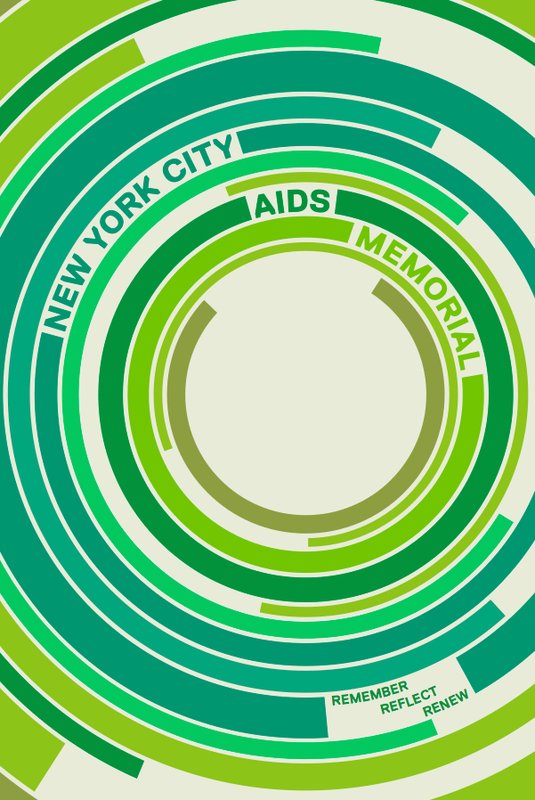As consumers, every time we pull out our wallet, we vote for or against something. As some brands become more transparent about where they source their products, how they’re made, and how safe they are for the environment and the people who make them, it’s not hard to understand that what matters isn’t just what we buy, but how our purchases both shape and reflect the social, economic, environmental, and political aspects of the industry they're a part of. Art is no different.
While we hope that you build your collection, first and foremost, around the artists and artworks you love the most, we also hope that you consider where your art is coming from and who it benefits. Especially since, unlike a cup of coffee, the sale of an artwork can involve a substantial chunk of change—how far the money goes, and how it’s used, is impactful.
In the spirit of giving as we gear up for the holiday season, we’ve put together a simple guide for conscience collecting. Some tips list organizations worth supporting, while others serve as more general, gentile reminders.
Avoid the Secondary Market—Support Living Artists
Money in the art market often exchanges hands without ever touching an artist. After an artist sells a work, whether through a gallery or directly from the studio, they very rarely are able to profit off it again, even if it skyrockets in value. (We say 'rarely' because in some cases, or in some places like the U.K., “resale rights” guarantee that the artist receives a—rather small—percentage of secondary sales of their work.) If there is a living artist who you’re interested in, consider supporting their new work, rather than buying work from auction or a secondary-market dealer. Find out who represents them and see if they have any available work. And, be adventurous in searching for lesser-known artists worth supporting. Keeping up with our Artist to Watch series is a good place to start.
Bid on Benefit Auctions
While many collectors flock to benefit auctions because they can offer the opportunity to buy sought-after works below market value, they can also be great ways to give your money to worthy causes while also getting a great artwork in return—killing two birds with one stone. Just remember, not all benefit auctions are created equal; it’s important to closely look at who or what the auction is benefiting, of course. While supporting museums is always nice, you might want to look into how funds raised from a museum benefit will be used. Are there community outreach or educational programs that the museum offers? And if so, will those programs see any of the fundraised money?
A safer bet is bidding on auctions that raise money for a specific cause or non-profit organization doing humanitarian work that you believe in. In September, Phillips held a benefit auction—with works by artists like Tracey Emin, Anish Kapoor, Rita Ackerman, Rashid Johnson, Barbara Kruger, and many others—that donated all proceeds to One Drop, an organization that helps provide access to safe water and sanitation to more than 200,000 Latin Americans in dire need. Earlier this month, Sean Kelly gallery in New York hosted an auction to benefit The Human Rights Campaign, the nation’s largest LGTBQ civil rights organization. Artspace also hosts benefit auctions regularly. In the past, we’ve helped raise money for the International Animal Rescue, The LGBTQ Center of New York, CUE Art Foundation, the AIDS Community Research Initiative of America (ACRIA), and many others.
Looking for some upcoming benefit auctions? Here are two: On Thursday (November 8), RxArt is hosting an art auction and party to raise funds for their organization, which commissions artists to produce site-specific works in children’s hospitals, helping sick children heal through the power of visual art. And on November 14th, Tyler Loftis, a New York-based painter, will host Portraits For Purpose at the Bowery Hotel, where the artist paints portraits of celebrities, auctions them, and donates all proceeds to a charity of the depicted celebrity’s choice.
Collect Charitable Editions
Like benefit auctions, charitable editions are often affordable ways to collect some of your favorite artists while also supporting good causes. Artspace has produced and/or promoted a number of charitable editions with artists like Mickalene Thomas to support her scholarship fund for the New York Academy of Arts, Massimo Vitali to support The Fresh Air Fund (that provides summer camps and outdoor activities for low-income children in New York), Kobi Benezri to benefit the New York City Aids Memorial; April Gornik to support Planned Parenthood, and Clifford Ross to support Charity:Water, among many others. (To see all of our charitable editions, browse the full collection here.)
Do Your Homework—Make Sure You Agree with Your Seller’s Politics
In the book 2016 in Museums, Money, and Politics written by Andrea Fraser, one of the art world’s most important artists engaging in institutional critique, the artist looks at the relationship between electoral politics and private-nonprofit art institutions in the U.S. In it, she published the reported political contributions in the 2016 election cycle made by trustees of over 125 art museums. (Of the $6.4 billion raised for presidential and congressional races, more than half came from just a few hundred of people—many of whom are board members and supporters of cultural institutions.) According to the book’s publicist, “supporting the arts must involve more than giving donations to museums; it must also include defending the values, social structures, and political institutions of an open, tolerant, just, and equitable society.”
Similarly, artist Seth Price and a team of anonymous coders created an algorithm to reveal some of Trump’s top financial supporters in the art world. There’s even a page on the site called “Trump Transition Team Finance Committee” that singles out collectors Trevor D Traina (a board member of the Fine Arts Museums of San Francisco), Wilbur L Ross Jr, and Heather & Steven Mnuchin for being particularly impactful in their major and recent support of Republican politicians.
Regardless of where you lean politically, there are ways of finding out whether the money you spend on art might wind up in the pockets of politicians you may be for or against. So, be sure to do your homework.
Value Diversity
According to the National Endowment for the arts, 51 per cent of visual artists today are women, and on average, they earn 81 cents for every dollar made by male artists. If you believe that historically marginalized groups—artists of color, women, members of the LGBTQ community, non-Western artists, differently abled artists, etc.—deserve to be better valued in the art world, put your money where your mouth is! And no matter which artist you’re interested in, don’t forget that the gallery that represents them also benefits from your patronage. Check the rosters of the gallery’s you work with. Do they list almost entirely white male artists? Or do they have a long history of working with a diverse group of artists? We like galleries like Mariane Ibrahim Gallery, Jenkins Johnson Gallery, and Kavi Gupta Gallery.
RELATED ARTICLES:
Our Guide to Conscious Collecting: Support the Causes You Care About with Art
RELATED COLLECTIONS:
Eco-Conscious Collecting: Catherine Opie, Olafur Elíasson, & More
Conscious Collecting: Support Planned Parenthood, Fresh Air Fund, & More



































